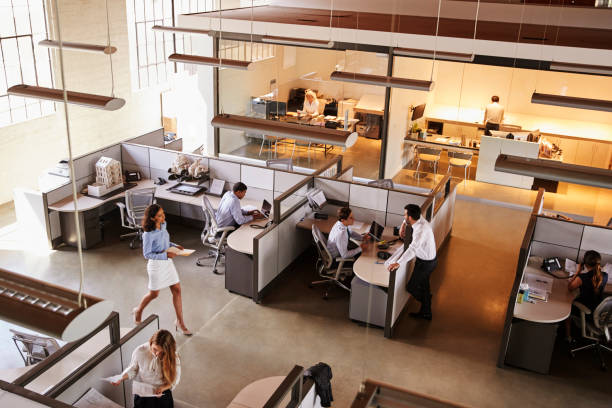
Introduction
The cubicle office has been a staple of corporate America for decades. For many, it conjures images of drab, gray partitions and fluorescent lighting, but it has also played a significant role in shaping the modern workplace. In this article, we will take a closer look at the cubicle office, its history, its present state, and its potential future as businesses continue to evolve.
A Brief History of the Cubicle
The concept of the cubicle office can be traced back to the early 1960s when Robert Propst, an American designer, developed the Action Office system. His vision was to create a more flexible and efficient office environment, moving away from the rigid and hierarchical layouts that were prevalent at the time. The Action Office introduced modular workstations with low walls, providing employees with a sense of privacy while maintaining a collaborative atmosphere.
However, as time passed, the cubicle office evolved in ways that Propst had not intended. It became synonymous with corporate monotony, with rows upon rows of indistinguishable workspaces. This transformation was primarily driven by cost-cutting measures, as businesses sought to maximize office space and minimize expenses.
The Present-Day Cubicle Office
Today, the cubicle office remains a common sight in workplaces across the world. However, it has undergone significant changes in response to shifting workplace dynamics and employee expectations.
Open Office vs. Cubicle
In recent years, there has been a growing debate over the merits of open-plan offices versus cubicle offices. Open offices, with their absence of physical barriers, were heralded as spaces that fostered collaboration and communication. However, they often led to noise, distractions, and reduced privacy, which negatively impacted productivity and employee well-being.
As a result, many organizations have started reevaluating their office layouts and reintroducing elements of privacy and personal space through the use of cubicles. The cubicle office, in this context, serves as a compromise between complete openness and total isolation, providing employees with a designated area to work while still facilitating interaction.
Flexibility and Personalization
Modern cubicle offices are designed with flexibility in mind. They can be easily reconfigured to accommodate changing team dynamics and project requirements. Furthermore, employees are often encouraged to personalize their cubicles, adding personal touches that make their workspace more comfortable and reflective of their personality.
This personalization not only improves employee satisfaction but also contributes to a sense of ownership and belonging within the workspace. Cubicle users can decorate their areas with family photos, artwork, or plants, creating a more inviting and enjoyable atmosphere.
Ergonomics and Well-being
The well-being of employees has become a significant focus for businesses, and cubicles have evolved to address this concern. Ergonomic considerations now play a crucial role in cubicle design, with adjustable desks, ergonomic chairs, and monitor arms becoming standard features.
Moreover, cubicles have started to incorporate biophilic elements, such as natural lighting and greenery, to promote employee well-being and productivity. This holistic approach to workspace design reflects a growing awareness of the impact of the physical environment on mental and physical health.
The Future of the Cubicle Office
As we look ahead, the cubicle office is poised to continue evolving in response to changing work trends and technologies. Here are some potential directions for the future of the cubicle office:
Hybrid Work Environments
The COVID-19 pandemic has accelerated the adoption of remote work and hybrid work models. While many employees now have the flexibility to work from home, the office remains an important hub for collaboration and social interaction. Cubicle offices can be adapted to support this hybrid work environment, providing dedicated workspaces for those who come to the office while allowing remote employees to connect virtually.
Technology Integration
Advances in technology, such as augmented reality (AR) and virtual reality (VR), have the potential to reshape the cubicle office experience. Imagine a future where employees can meet virtually in a shared digital workspace, even if they are physically located in different parts of the world. Cubicle offices could incorporate these technologies to enhance collaboration and bridge the gap between in-person and remote work.
Sustainable Design
Sustainability is a growing concern, and future cubicle offices are likely to prioritize eco-friendly design principles. This could involve the use of renewable materials, energy-efficient lighting and HVAC systems, and a focus on reducing waste and carbon emissions. Green certifications like LEED may become more common for cubicle office spaces.
Conclusion
The cubicle office, born out of a desire for more efficient and flexible workspaces, has come a long way since its inception. It has adapted to changing work dynamics, employee needs, and technological advancements. As we move into the future, the cubicle office is poised to remain a vital part of the corporate landscape, offering a balance between collaboration and privacy, flexibility and structure, and well-being and productivity. Its continued evolution will be shaped by a deepening understanding of what makes a workspace truly functional and conducive to success in the modern world.
